A player with large hands will need to use a handrest (crutch) on the boot joint for the right hand, and probably a spacer on the long joint for the left hand. The right-hand crutch has been in use for many years and is considered a standard part of the bassoon. The left-hand spacer has seen more common use in the last decade.
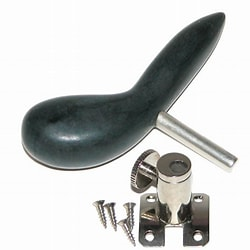
THE RIGHT-HAND CRUTCH
A right-hand crutch controls the right hand’s distance from the bassoon. The stem of the crutch is inserted into the crutch hardware located on the right side of the boot joint.
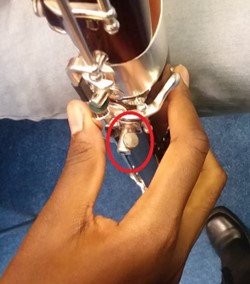
The hardware includes a tightening screw which allows the crutch to be locked into place at the ideal height depending on the player’s hand size. A properly adjusted crutch will allow the right hand to relax with the pads of the index and middle fingers falling at the center of their respective tone holes while also allowing easy reach and operation of the pinky cluster keys.
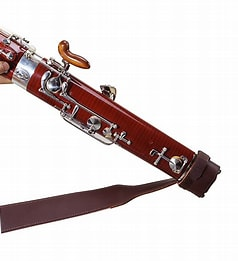
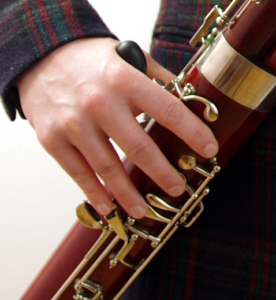
Note: Players with smaller hands may not be able to comfortably reach the keys/holes with the crutch in place. Players over 6 feet tall will want to consider buying a custom crutch with a longer stem because the standard crutch will not provide enough support for extremely large hands.
THE LEFT-HAND CRUTCH
The left-hand handrest serves a similar function as the right-hand crutch but for the left hand. The base of the left index finger provides the third point of support and balance when holding the bassoon. The exact point of contact will vary from player to player due to hand size (width of palm and length of the fingers), but it should fall between the middle and lower knuckles of the left index finger. This point of support is crucial in developing good hand position and agile finger technique. It will allow the left hand to rest comfortably with the pads of the index, middle, and ring fingers contacting the center of the E, D, and C tone holes respectively. The left-hand handrest/spacer allows the player to maintain contact between the base of the index finger and the long joint without collapsing the base of the index finger. This is especially helpful for technique in the lowest octave.
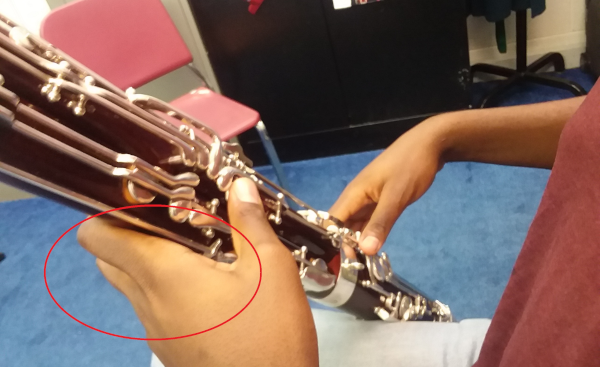
The player in this photo has exceptionally large hands and is having to collapse the base joint of his index finger to rest against the long joint. Collapsing the hand in this way restricts the mobility of the left thumb. The other problem is that when the player needs to press the low C, B, or Bb key the base of the left index finger automatically loses contact with the long joint, removing a crucial point of support and balance for the instrument.
TIP: My Grip is a silicone spacer/handrest for the left hand made to address this issue. There are five thicknesses ranging from 2mm to 15mm. Choose the one that provides support while allowing trouble-free operation of the left-hand pinky keys and high C and D keys. If you find one size too small but the next size up is too big, you can layer the smaller sizes. The My Grip will adhere to the bassoon without any need for adhesive and will not damage the finish.
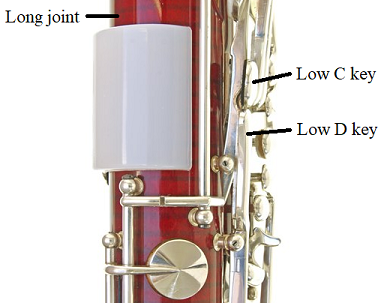
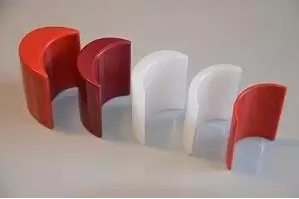
My Grip – Silicone Hand Support – Midwest Musical Imports (mmimports.com)
MyGrip | Miller Marketing (millermarketingco.com)
Bassoon Hand Rests (forrestsmusic.com)
Crutches for Bassoon – Charles Double Reed Company (charlesmusic.com)

Feedback/Errata